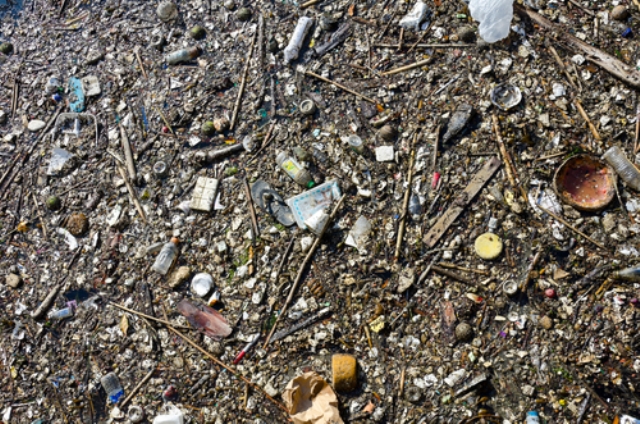Naked-To-The-Eye Plastic Pollution Threatens Great Lakes
By Chuck Sudo in News on Apr 15, 2013 8:20PM
Most of us know about the Great Pacific Garbage Patch, an island-sized floating mass of plastic waste and other detritus environmentalists call “the world’s largest landfill.” It’s the most notable of three discovered by the Five Gyres Project, which travels the world researching the impact of waste on the earth’s five oceanic gyres. The North Atlantic Garbage Patch, believed to be hundreds of kilometers in size, turns 41 this year, while the Indian Ocean Garbage Patch, while not a continuous mass of debris, was discovered a few years ago.
The same fate could befall the Great Lakes. A recent study released by the American Chemical Society found plastic production and inadequate disposal has lead to plastic debris becoming a growing threat to the world’s largest body of fresh water. What makes the problem in the Great Lakes troubling is the size of the plastic pollution, much of which can’t be seen by the naked eye. Lorena M. Rios Mendoza, Ph.D., who revealed her findings to the ACS at their 245th National Meeting & Exposition, said 85 percent of what they collected in Lake Erie measured less than two-tenths of an inch and much of that was microscopic. Her research group worked with the Five Gyres Project and found between 1,500 and 1.7 million of these particles per square mile.
The environmental dangers of plastic pollution are myriad. Fish and birds can eat the smaller particles floating on the surface. The photodegradation of plastics in the water can lead to chemicals leaching into the water and being consumed by marine life, then working its way up the food chain to possible human consumption. Rios-Mendoza told National Geographic Newswatch the levels of polyaromatic hydrocarbons (PAHs) found in Lake Erie — the shallowest of the Great Lakes — is twice as high as levels found in the world’s oceans. The level of micro-plastic particles in Lake Erie is also greater than in the oceans.
How this extends to the other Great Lakes is yet to be determined. Rios-Mendoza told National Geographic’s Lisa Borre that her team has found micro plastic pollution in Lake Superior, but that it takes more than two hours of trawling with a fine mesh net to collect the levels found in Lake Erie. The team plans on sampling Lakes Erie, Michigan and Ontario, and the St. Lawrence River, this summer, and will continue their research as funding allows.
